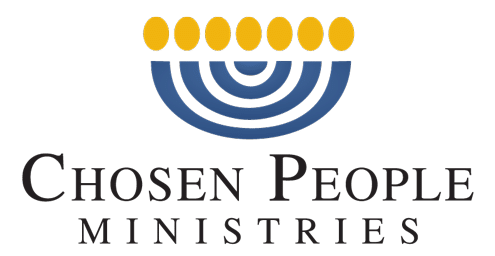Every life has its landmarks: the first meeting with your future spouse, that initial open door that leads to other possibilities, or a decision to move on to uncharted territory. We reflect upon these landmarks as we consider the meaning of the story that the Lord is telling through our lives.
Nations also look back upon landmarks, and Israel especially does so. One of its most important landmarks is the Passover. Starting with the Exodus from Egypt, the annual Passover celebration has been a witness to every key event in Jewish history, including the most important of all, the coming of the Messiah. Passover, both past and present, is a time of earthly and heavenly excitement, especially in the Land of Israel.
Passover in the Time of Jesus
Can you imagine the town or city you live in swelling to six times its normal size? That’s what happened to Jerusalem at the time when Jesus the Messiah carried out His earthly ministry.
According to the noted scholar Joachim Jeremias, Jerusalem had a population of about 20,000 to 30,000 people. But at Passover, one of the three festivals that must be celebrated in Jerusalem mentioned in Leviticus 23 and Deuteronomy 16, the Holy City’s population swelled by perhaps another 150,000.1 Imagine every room filled, with campsites popping up on every available hillside, inhabited by Jewish people who had traveled from throughout the world.
First and foremost in their thoughts would have been the Temple itself. Alfred Edersheim, the noted Messianic Jewish scholar, captures something of the flavor of the Jewish attitude toward the Temple at the time of Jesus in his book The Temple: Its Ministry and Services.
In all his wanderings the Jew had not seen a city like his own Jerusalem…Nor has there been, either in ancient or modern times, a sacred building equal to the Temple, whether for situation or magnificence; nor yet have there been festive throngs like those…who, with their hymns of praise, crowded towards the city on the eve of a Passover.2
Preparations for Passover in Jerusalem were a painstaking task. According to Edersheim, bridges and roads had to be put in shape for the thousands of pilgrims that would stream into the city, and special care would be taken to keep Jerusalem and its environs ceremonially clean for the feast.3 Then, after other preliminary activities and offerings, the Passover Lamb would be sacrificed between the evenings of the 14th and the 15th day of the month of Nisan.
Edersheim describes the solemn scene on the Temple Mount:
It was done [in this way]-the first of the three festive divisions, with their Paschal lambs, was admitted within the Court of the Priests. Each division must consist of not less than thirty persons (3 x 10, the symbolical number of the Divine and of completeness). Immediately the massive gates were closed behind them. The priests drew a threefold blast from their silver trumpets when the Passover was slain. Altogether the scene was most impressive.4
One can only imagine the thoughts of Jesus the Messiah at His final Passover as He beheld the slaying of the lambs at the Temple, knowing that His own hour had at last come.
Passover in Jerusalem Today
Passover in Israel today (and indeed in Jewish communities around the world) is also an elaborate affair. As in days of old, Jerusalem undergoes a rigorous “spring cleaning” in preparation for the festival.
In a charming article by Judy Lash Balint titled, “Seventeen Ways You Know Passover Is Coming in Jerusalem,” the author writes, “No alarm clock needed here-we have the clanging of the garbage trucks as they roll through the neighborhood every morning during the two weeks before Pesach to accommodate all the refuse from the furious cleaning going on in every household. The day before the seder they make their rounds at least twice during the day.”5
Passover is also a time for vacation for Israelis, and many who can afford it enjoy celebrating Passover in resorts where someone else can cook and clean up. Luxury hotels also offer packages to Israel’s prime getaway locations such as Safed, Tiberias and Tel Aviv and advertise internationally.
Of course, since the destruction of the Temple, lambs are no longer sacrificed at the Temple Mount. However, various Jewish sects use the Passover celebration to reemphasize the connection of modern-day Israel to the Israel of the Scriptures. Some of them even slaughter and roast a young goat on Givat Hananya, a nearby hill. The “Samaritan Passover” is another example of the deep hold that the act of sacrifice still has on some sectors of the Jewish soul.
Messiah’s Sacrifice – Yesterday, Today and Tomorrow
The Passover celebrates the Exodus of the children of Israel from their bondage to Pharaoh in Egypt. Over the centuries, the closing prayer, “Next Year in Jerusalem” has been the yearning hope of return to the Land of Promise and all the promises-past, present and future-that are part of that restoration. The ministry of Jesus the Messiah contains the fulfillment of all those hopes. His sacrifice once and for all paves the way for us to enter every aspect of God’s peace as we learn to place our faith in Him.
John the Baptist proclaimed, “Behold! The Lamb of God who takes away the sin of the world!” (John 1:29). The meaning of these words could never be complete without the Passover. For just as the children of Israel were shielded from God’s judgment in Egypt by the blood of the innocent Passover lamb, so are we covered and forgiven through the blood of Jesus, the Lamb of God.
Notes:
1. Joachim Jeremias, Jerusalem in the Time of Jesus (Philadelphia: Fortress Press, 1969), p. 84.
2. Edersheim, Alfred, The Temple – Its Ministry and Services (Peabody, MA: Hendrickson Publishers), pp. 5-6.
3. Ibid., p.169.
4. Ibid., p.175.
5. Seventeen Ways You Know Passover is Coming in Jerusalem


